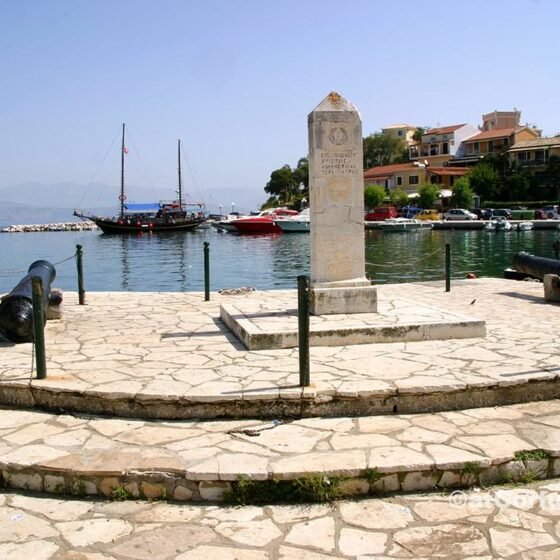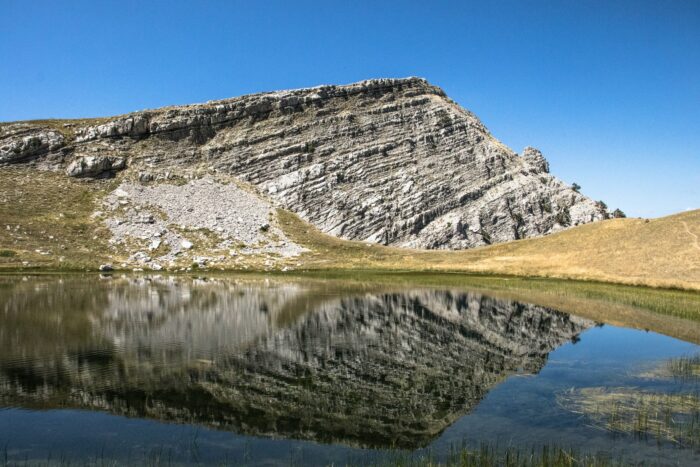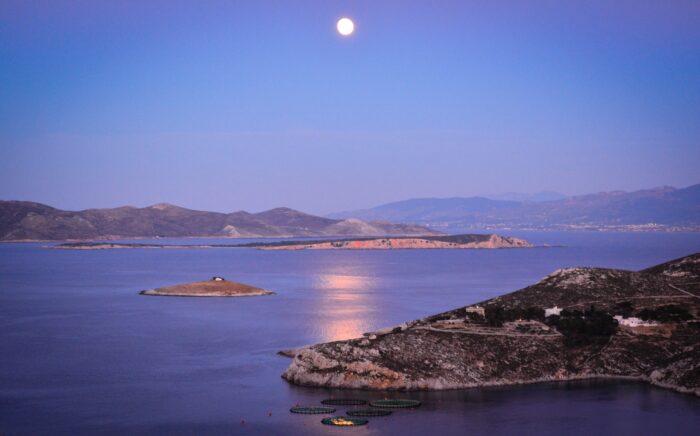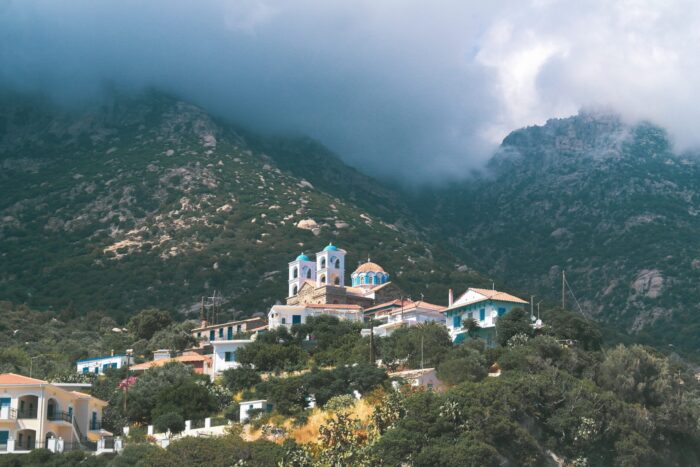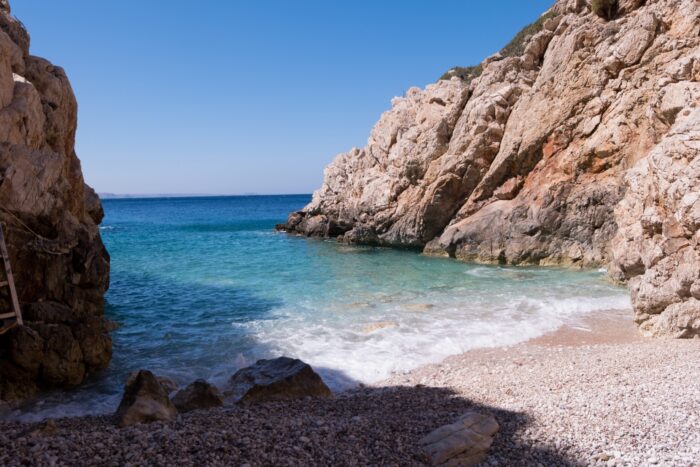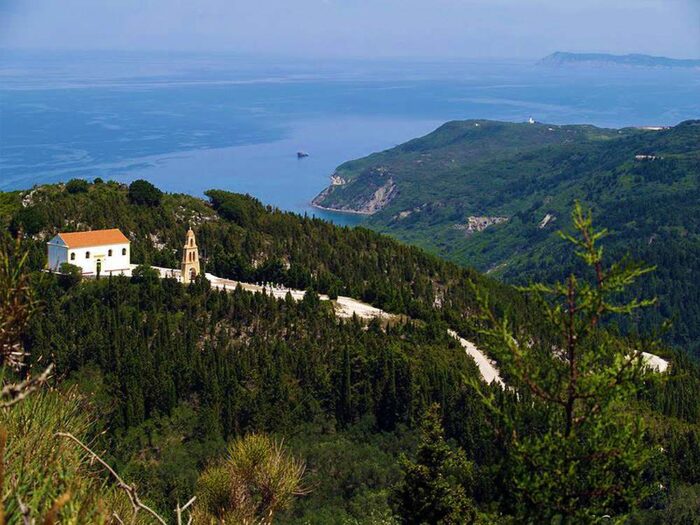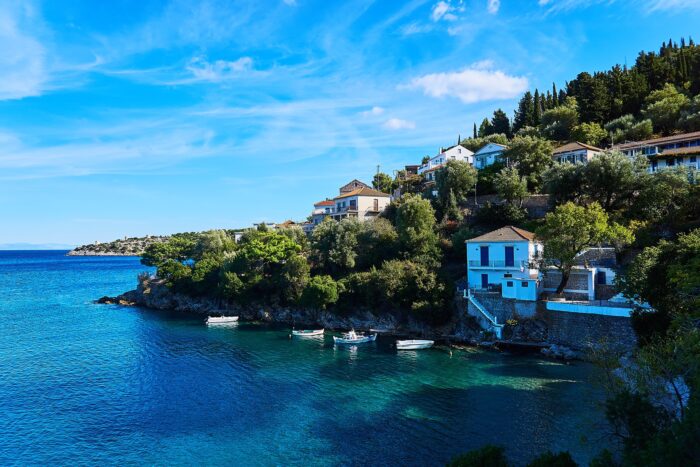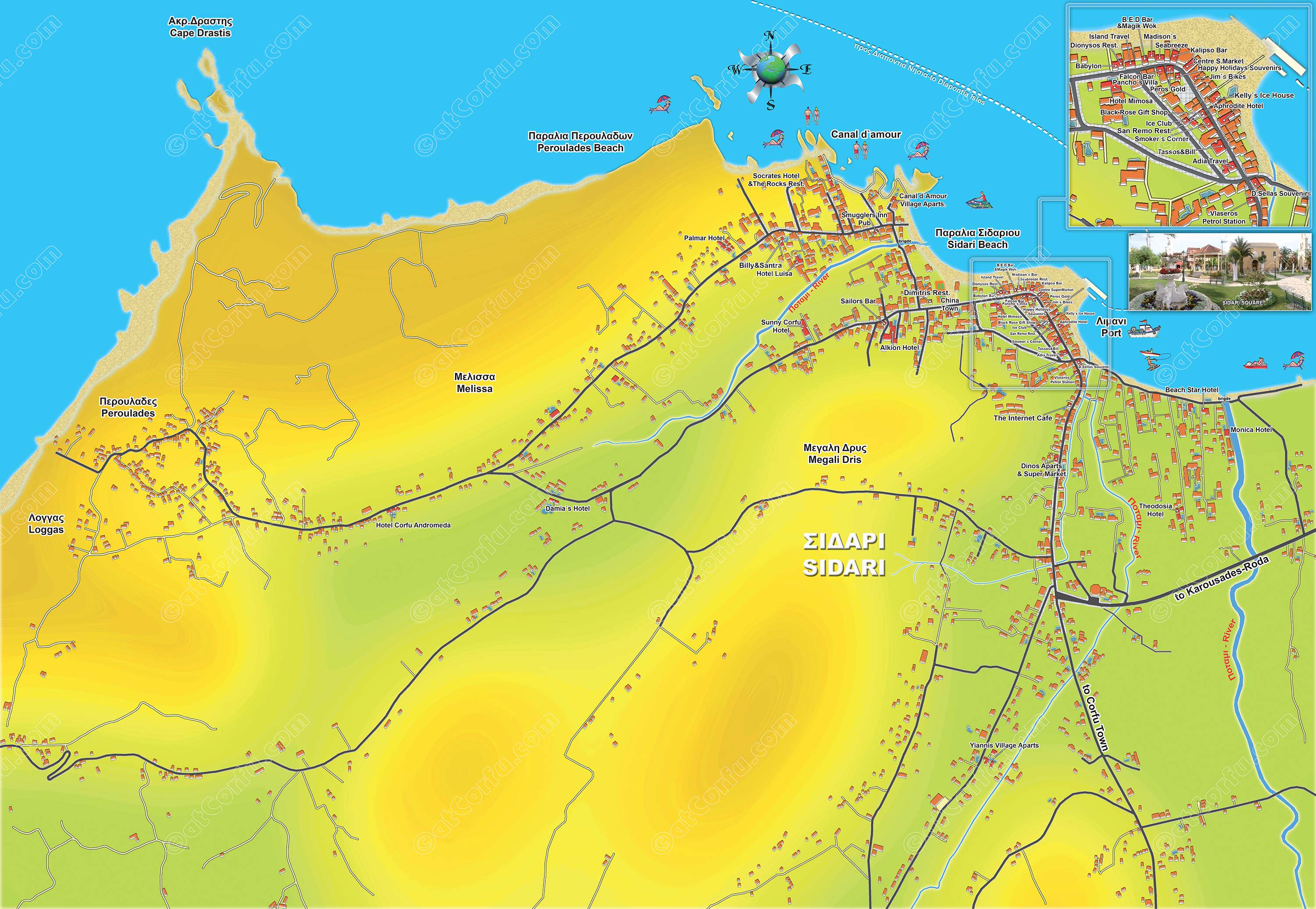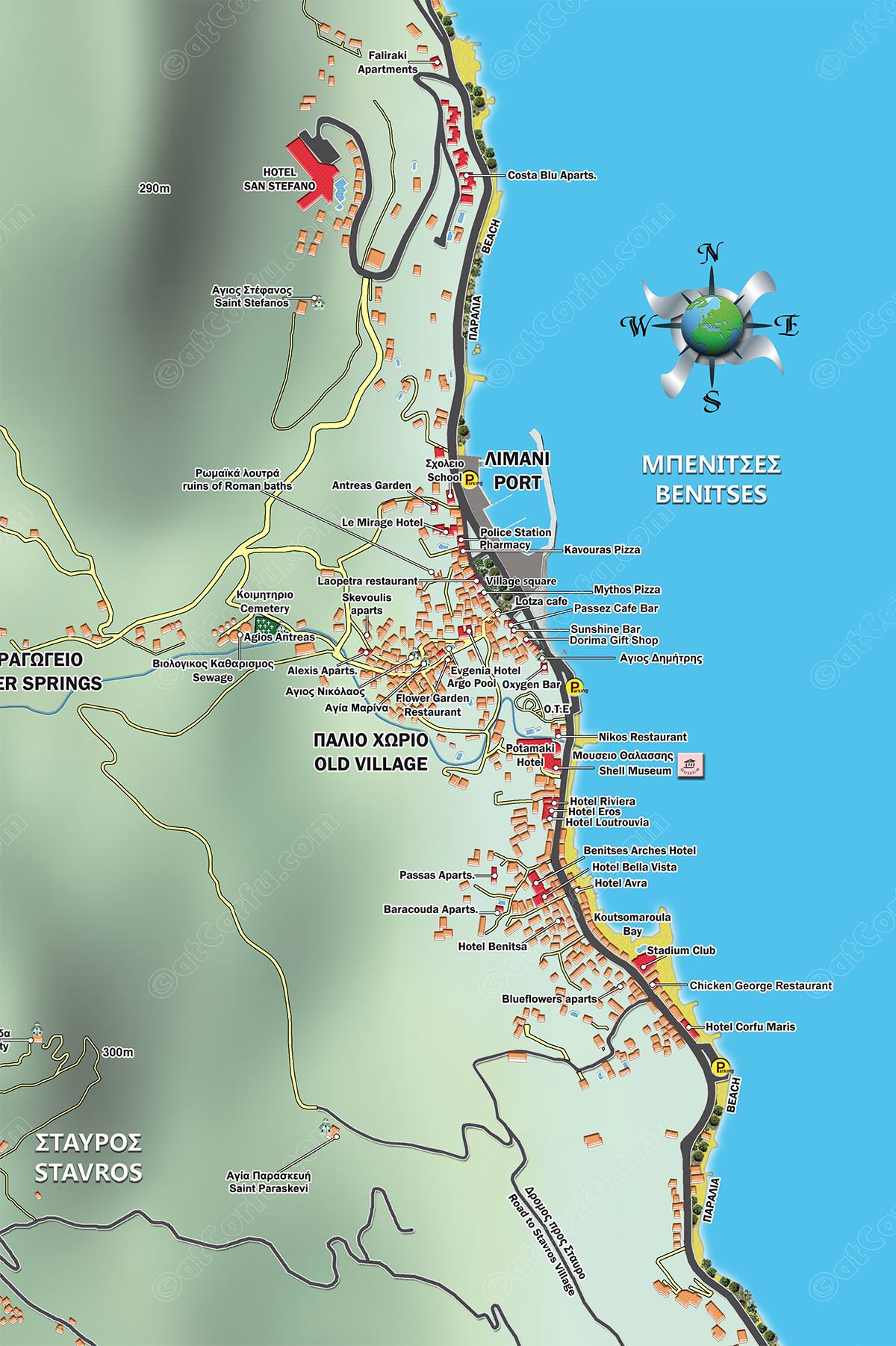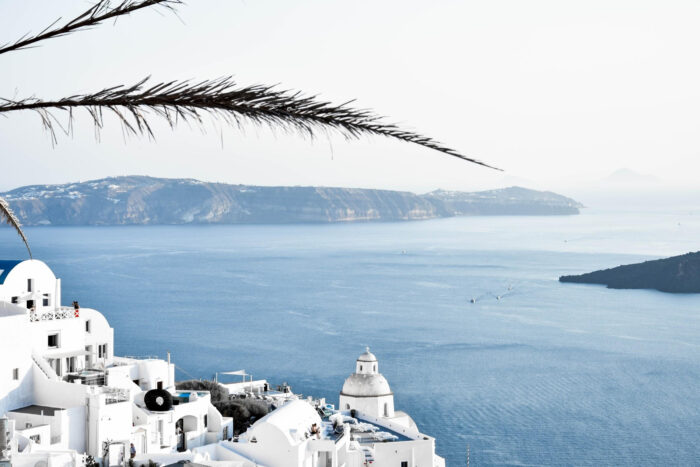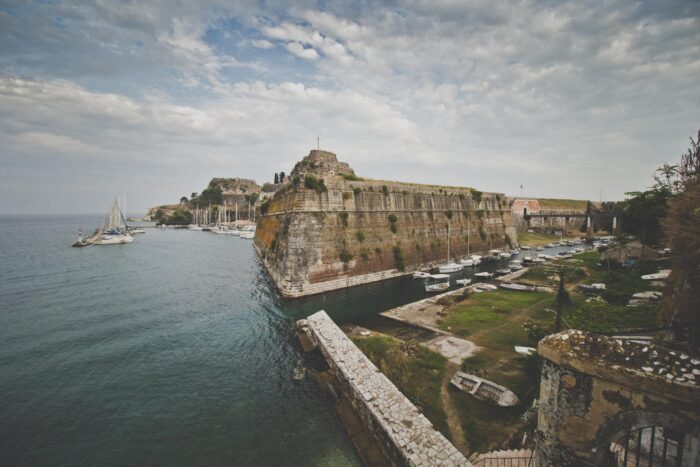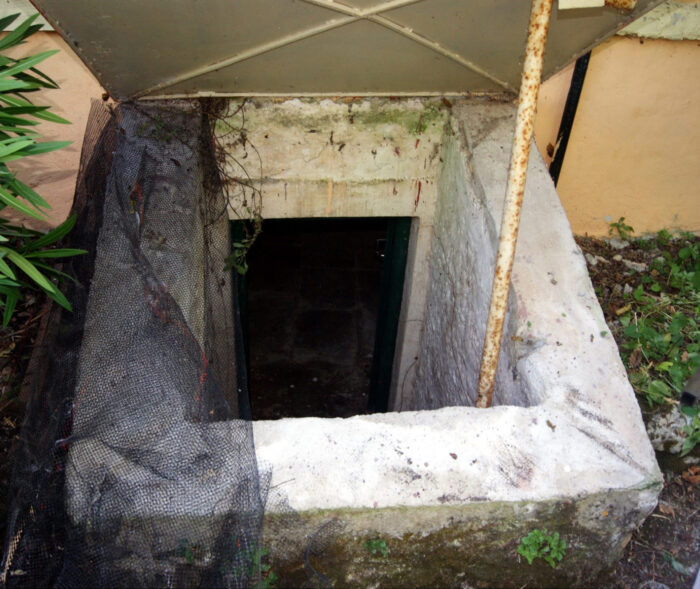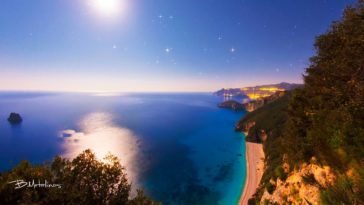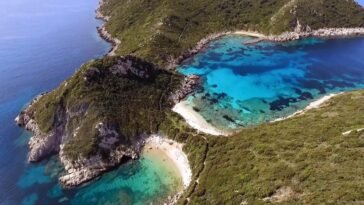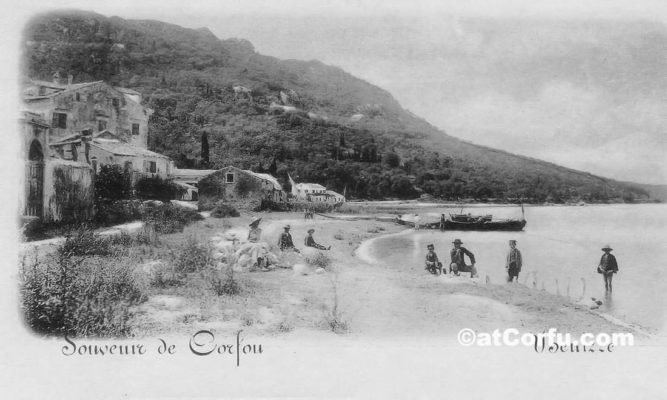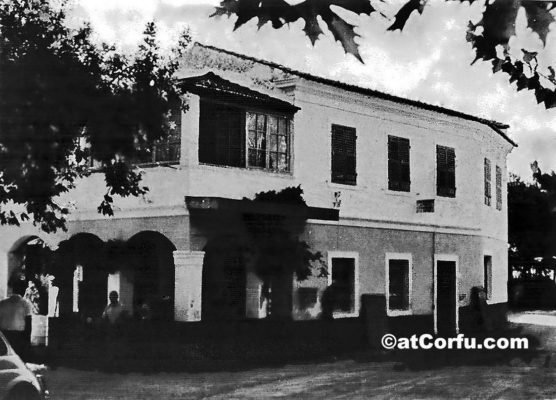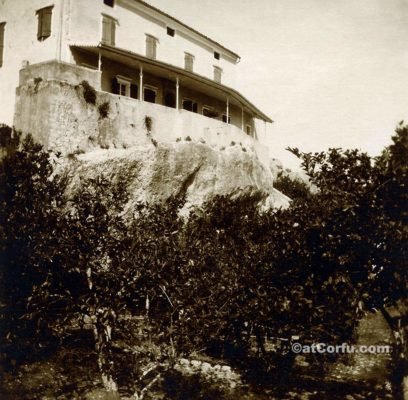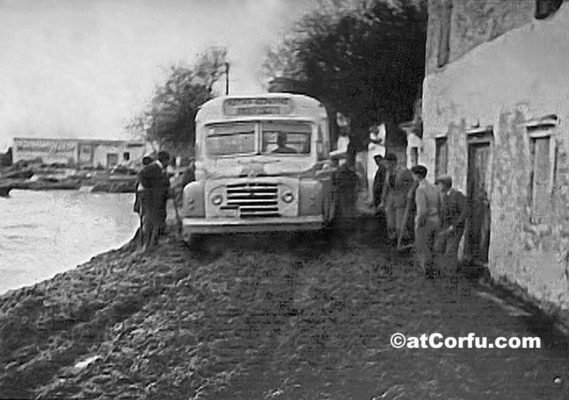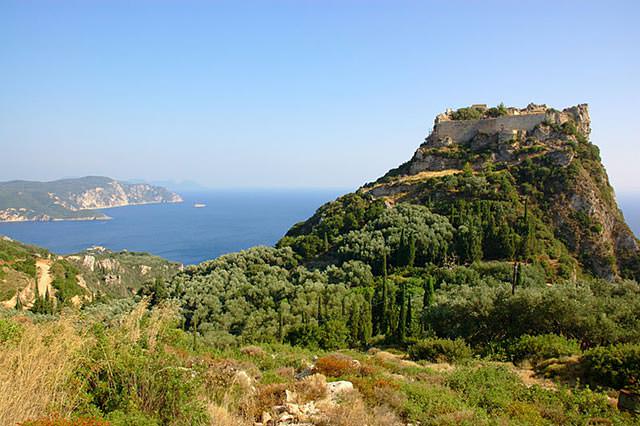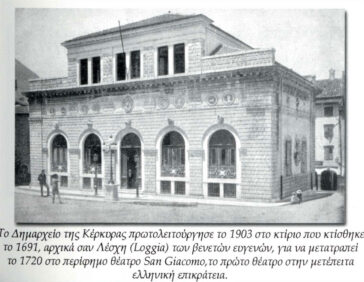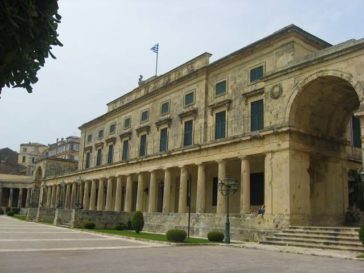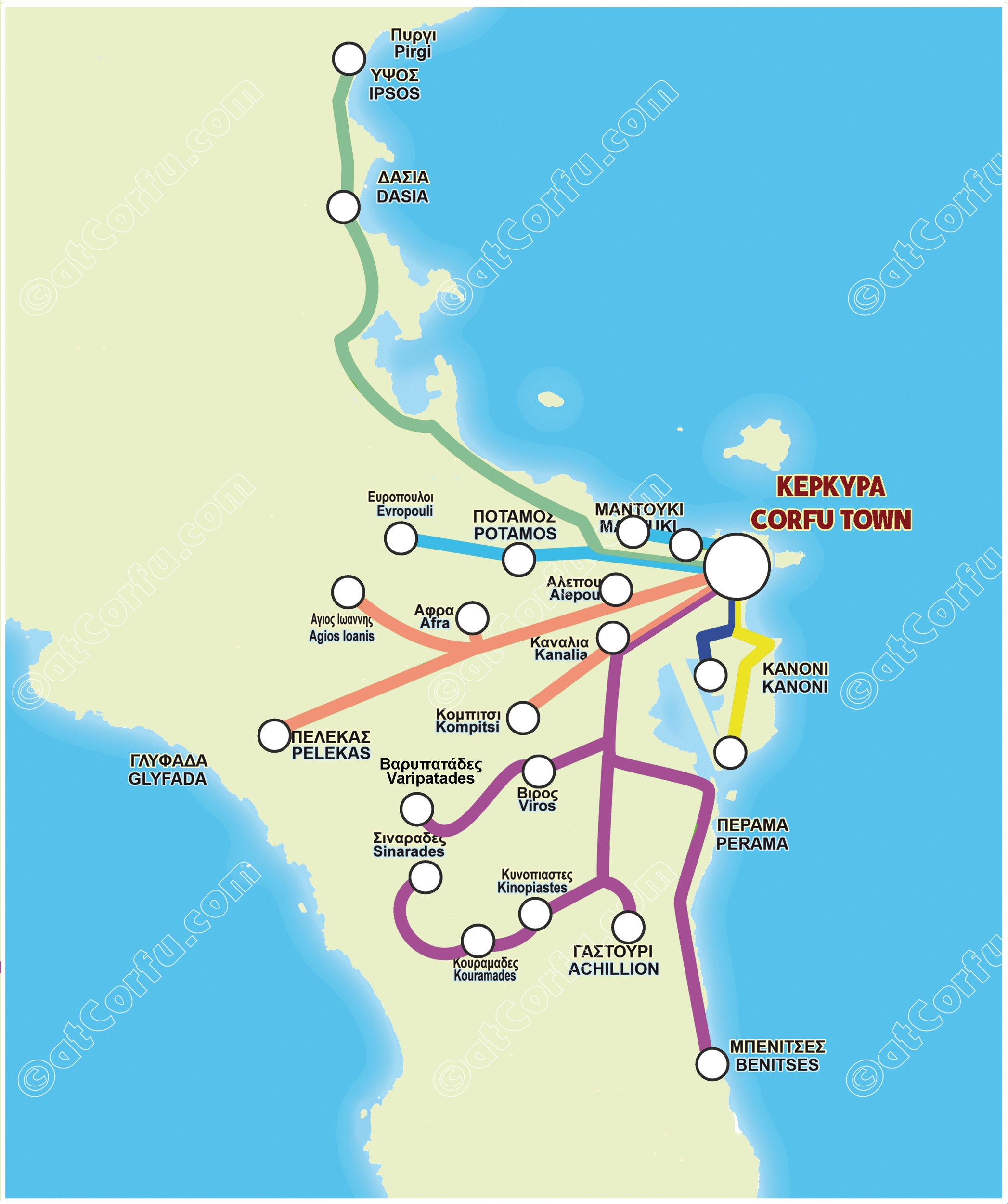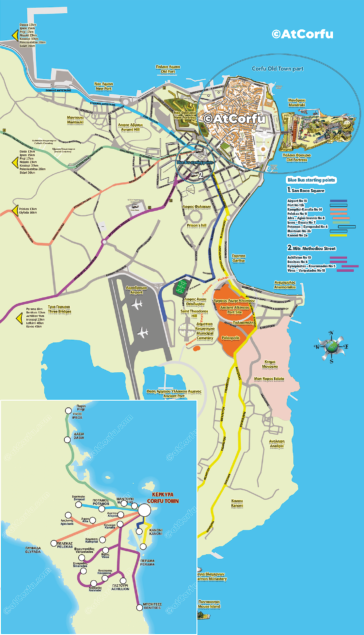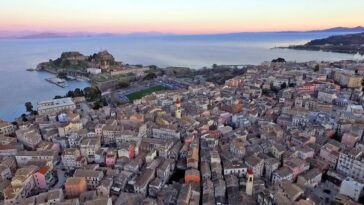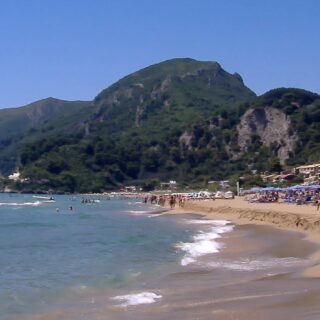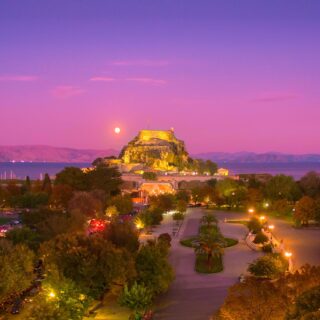Last updated on July 16th, 2025 at 02:59 am
Kassiopi in Corfu
Kassiopi is a village located on the northeast coast of the Greek island of Corfu, 36 km from Corfu town and the airport.
It is a popular tourist destination known for its picturesque harbor, beautiful beaches, and ancient ruins.

Tourism is a significant part of Kassiopi’s economy, and the village attracts a large number of visitors every year. The tourism industry in the village primarily revolves around its natural beauty, historical attractions, and recreational activities.
The village is a popular destination for those seeking a relaxing holiday with plenty of opportunities for recreation and exploration.
Kassiopi’s picturesque harbor is a popular attraction, and visitors can enjoy boat tours to nearby beaches and explore the coastline. The village’s ancient ruins, including the Roman baths and the medieval castle, are also popular with tourists.
The area has a range of accommodation options, including hotels, apartments, and villas. Many of these are located near the beaches and offer stunning sea views. The village also has a good selection of restaurants, cafes, and bars, serving both traditional Greek cuisine and international dishes.
Visitors can also enjoy a range of recreational activities, such as snorkeling, scuba diving, water skiing, and windsurfing. The nearby beaches offer opportunities for swimming and sunbathing, while the surrounding countryside is ideal for hiking and cycling.
How to come to Kassiopi
Here are some ways to get to Kassiopi:
- By air: Of course, before reaching Kassiopi you must come to Corfu first. The nearest airport is the Ioannis Kapodistrias International Airport in Corfu town, which is approximately 37 kilometers away. Many airlines operate regular flights to Corfu from major cities across Europe, making it easy to reach the island by air. From the airport, you can take a taxi or rent a car.
- By ferry: Corfu is also accessible by ferry from the Greek mainland and other nearby islands. Ferries operate from the port of Igoumenitsa on the mainland to Corfu town, which is approximately 30 kilometers away from Kassiopi. From Corfu town, you can take a taxi or rent a car.
- By bus: There are regular bus services from Corfu town, with several departures each day. The journey takes approximately one hour, and buses depart from the main bus station in town.
- By car: If you prefer to drive, you can rent a car from the airport or the town and drive up here. The journey takes approximately 45 minutes from the airport and 30 minutes from Corfu town.
Regardless of how you choose to travel, Kassiopi is a beautiful destination that is well worth the journey.
Beaches around and close to Kassiopi
The northeastern coast of Corfu is known for its beautiful beaches and crystal-clear waters. Here are some of the most popular beaches in and around Kassiopi:
- Kassiopi’s central Beach: Located just a short walk from the center of the village, Kassiopi Beach is a beautiful sandy beach with crystal-clear waters and stunning views of the Albanian mountains across the sea.
- The beaches of Erimitis: Erimitis is a beautiful and unspoiled area located on the northwestern coast of Corfu, and it is known for its rugged coastline and crystal-clear waters. While there are no sandy beaches in the area, there are several rocky coves and bays that are perfect for swimming and sunbathing.
- Avlaki Beach: A picturesque bay located about 3 km to the east of the village center, Avlaki Beach is a long, sandy beach with calm, shallow waters, making it ideal for families with children. There are also several restaurants and cafes in the area.
- Agios Spyridon Beach: Located about 7 km from Kassiopi to the north, Agios Spyridon Beach is a beautiful sandy beach with shallow waters, making it perfect for swimming and sunbathing. There are also several tavernas and beach bars in the area.
- Kerasia Beach: A beautiful pebble beach located about 5 km to the south, Kerasia Beach is a secluded spot with crystal-clear waters and stunning views of the coastline.
- Kalami Beach: Located about 9 km to the south, Kalami Beach is a picturesque pebble beach with clear waters and stunning views of the bay. The beach is also known for its connections to the famous writer Lawrence Durrell, who lived in the village during his time on the island.
Beaches inside the Kassiopi settlement
Overall, Kassiopi and the surrounding area offer a wide range of beautiful beaches like Bataria, Pipitos, and more, making it an ideal destination for those who love the sea and the sun. So don’t miss the opportunity to discover those gems.
Shops, Restaurants, Bars, and Accommodation
Kassiopi has a good selection of shops, restaurants, bars, and accommodation options, catering to the needs of visitors. Here are some examples of what you can find here:
Shops:
- Supermarkets: There are several supermarkets, including Lidl and AB Supermarket, where you can buy groceries and other essentials.
- Souvenir shops: Kassiopi has a range of souvenir shops selling traditional Greek gifts, including ceramics, jewelry, and clothing.
- Fashion and accessories stores: There are several fashion and accessories stores, selling clothing, shoes, bags, and more.
- Convenience stores: There are several convenience stores in Kassiopi, selling snacks, drinks, and other items.
Restaurants:
- Tavernas: You can find several traditional Greek tavernas serving local dishes, such as souvlaki, moussaka, and fresh seafood.
- Italian restaurants: There are also several Italian restaurants, serving pasta, pizza, and other Italian dishes.
- International cuisine: Many local restaurants serve international cuisine, such as Chinese, Indian, and Mexican food.
Bars:
- Cocktail bars: There are several cocktail bars in Kassiopi, serving a range of drinks, including cocktails, beer, and wine.
- Sports bars: Kassiopi has several sports bars, where you can watch live sports events on big screens.
- Nightclubs: There is a couple of nightclubs, which are popular with young people and stay open until late at night.
Overall, Kassiopi has a good selection of shops, restaurants, bars, and accommodation options, making it a comfortable and enjoyable destination for visitors.
Lodging in Kassiopi
Kassiopi offers a variety of lodging options, ranging from budget-friendly apartments to luxurious villas with private pools. Here are some examples of the types of lodging available:
- Hotels: There are many hotels, ranging from budget-friendly options to luxury hotels with swimming pools and spa facilities. Some popular hotels include:
- Melina Bay Boutique Hotel: A stylish and modern hotel with sea views, a swimming pool, and a restaurant.
- Kassiopi Bay Hotel: A family-run hotel with a swimming pool and a garden, just a short walk from the beach.
- Corfu Secret Boutique Hotel: A luxurious hotel with a spa, a swimming pool, and private access to a secluded beach.
- Apartments and studios: Kassiopi has several apartments and studios available for rent, offering self-catering facilities and a more independent stay. Some popular apartments and studios are:
- Makris Apartments: A complex of self-catering apartments with a swimming pool, just a short walk from the harbor.
- Kassiopi Resort Apartments: A family-friendly complex of apartments with a swimming pool and a restaurant, just a short walk from the beach.
- Corfu Country House & Apartments: A peaceful complex of apartments and studios with a swimming pool and a garden, just a short drive from Kassiopi.
- Villas: Kassiopi has several villas available for rent, which are ideal for families or larger groups who want more space and privacy. Some popular villas are:
- Villa Parys: A luxurious villa with a private pool, a Jacuzzi, and sea views, just a short walk from the harbor.
- Villa Margarita: A spacious villa with a private pool, a garden, and sea views, just a short drive from the village’s center.
- Villa Medusa: A beautiful villa with a private pool and a garden, just a short walk from the beach.
Overall, Kassiopi offers a wide range of lodging options to suit every budget and preference, making it a popular destination for tourists visiting Corfu.
The port of Kassiopi
Kassiopi has a small but charming port located in the center of the village.
The port which itself is a small natural bay with two small quaysides to protect it from the north winds is primarily used by local fishermen, as well as pleasure boats and small yachts. The port area is a popular spot for tourists to take a stroll and enjoy the sea views and picturesque scenery.
The port is surrounded by restaurants, cafes, and bars, offering visitors a variety of dining and drinking options with a view of the sea. There are also a few small shops selling souvenirs, clothing, and other items near the port.
From here, visitors can also take boat tours to explore the nearby beaches and bays, including the popular beach of Avlaki and the secluded cove of Limnopoula. Boat rentals are also available for those who want to explore the coast at their own pace.
All roads here lead to the sea and particularly to this port that seems the center of daily activities in the village. Here are mooring small boats with tourists from all over the island and therefore is quite busy.
Divers say that in the middle of the harbor a freshwater spring rises, and not far offshore is an islet with a well to enable sailors to refill their water supplies.
Overall, the port of Kassiopi is a charming and picturesque spot, offering visitors a taste of traditional Greek fishing village life, as well as access to the beautiful sea and coastline of Corfu.
The Ancient Village of Kassiopi
Kassiopi was an ancient village and has played a major role in Corfu’s history, as can be proven by the impressive ruins of the castle overlooking the harbor.
The city was built in the 3rd century BC by the king of Epirus Pyrrhοs and was used as a supply point during his war against Rome.
Later, during the Roman conquest of the island in 230 BC, many Emperors visited it, most notably Emperor Nero.
It is said that Nero watched a play in the local theatre and visited the temple of Dias here.
Antony and Cleopatra stayed here a couple of days before the battle of Actium, where they suffered a huge defeat.
The Castle of Kassiopi
The Castle of Kassiopi is a historical landmark located in the heart of the village. It was built during the Byzantine era in the 13th century and has been the site of many battles and invasions throughout its history.
The castle is perched on a hill overlooking the sea and the village, and it offers stunning views of the surrounding area. The castle itself is in ruins, but it still retains much of its original structure, including the outer walls, towers, and entrance gate. Visitors can explore the castle and climb to the top of the towers for panoramic views of the surrounding landscape.
Today, the castle is a popular tourist attraction and a significant part of Kassiopi’s cultural heritage. It is open to visitors all year round, and there is a small admission fee to enter. In addition to exploring the castle, visitors can also learn about its history and significance through informational displays and guided tours.
Wrapping Up
Overall, Kassiopi is a wonderful destination for those looking for a relaxing holiday surrounded by natural beauty and rich cultural heritage. Kassiopi remains a very Greek village, a charming and picturesque place surrounded by green vegetation, that welcomes visitors, many of whom return every year, as the village retains its traditions and local color.
More in Northeast Corfu
Old Perithia: The Ghost-Village in Corfu is Reborn
Let’s take a journey back in time to the captivating village of Old Perithia, nestled on the slopes of Mount Pantokrator, with roots dating back to an astonishing 300 BCE.
Bataria and Pipitos Beaches in Kassiopi Corfu
Bataria and Pipitos are the most famous beaches at the Northeastern tip of Corfu island, with beautiful pebble beaches in small isolated coves scattered all around the area.
Kassiopi: A Corfu Haven Blending History and Port Life
Kassiopi is an ancient village on the northeastern tip of Corfu, 36km from Corfu town and today one of the Best Tourist resorts on the island.
Erimitis Beaches: Hidden Jewels at North Corfu
Erimitis area is the Northeastern tip of Corfu island, From the Agios Stefanos area in the East and stretches up to Kassiopi borders.
Sinies Area: Small Picturesque Places in Corfu
Is a name covering several small resorts beloved of visitors who generally visit by boat? This part of the coastline is studded with small bays which can be enjoyed in peace and quiet even in August. However the beaches here are stony, and swimming shoes are a good idea.
Nissaki Beach Corfu – Tranquil Sinies Retreat
Nissaki means small island- and it is, now linked to the Corfu mainland, and containing one of the island’s oldest tavernas.


